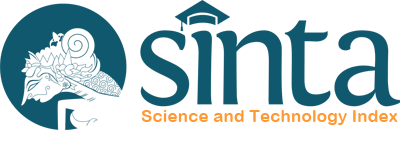Abstract
This narrative literature review examines critical healthcare challenges in Indonesia's island communities, focusing on workforce shortages, inadequate health infrastructure, and the profound impact of geographical and socioeconomic factors. Drawing from eight studies published between January 2000 and December 2023, the discussion highlights both the strengths and weaknesses of existing research. The studies were selected based on their relevance to healthcare issues in island communities, rigorous methodological approaches, and significant insights into healthcare challenges and solutions. This time frame was chosen to encompass a comprehensive evolution of healthcare challenges and responses, particularly considering the effects of the COVID-19 pandemic. Grounded in the Diffusion of Innovations and Health Belief Model frameworks, the study proposes evidence-based strategies to enhance healthcare accessibility and quality in these underserved regions. The Health Belief Model is employed to understand health behaviors within island communities, addressing perceived susceptibility, severity, benefits, and barriers. Strategies include increasing awareness of health risks, highlighting the benefits of telemedicine and improved infrastructure, and reducing access barriers through incentives and infrastructural enhancements. In contrast to, The Diffusion of Innovations Theory guides the dissemination of new healthcare practices and technologies. Emphasizing innovation attributes such as relative advantage, simplicity, trialability, and observability, and utilizing effective communication channels and local social systems. The study aims to promote the adoption of telemedicine and other innovations. By engaging community leaders and health workers, and considering the time needed for adoption, the proposed recommendations aim to accelerate the diffusion process, ultimately improving healthcare accessibility and outcomes in Indonesia's island communities.
References
- World Health Organization. (2023). Global Health Observatory Data Repository. Retrieved from (https://www.who.int/data/gho)
- Ministry of Health of Indonesia. (2023). Healthcare Workforce Statistics. Jakarta: Ministry of Health.
- Indonesian Health Department. (2022). Maternal and Child Health Report. Jakarta: Indonesian Health Department.
- Asian Development Bank. (2022). Impact of COVID-19 on Health Systems in Asia. Manila: Asian Development Bank.
- American Medical Association. (2023). Health Care Deserts. Retrieved from (https://www.ama-assn.org/delivering-care/patient-support-advocacy/health-care-deserts)
- doctorSHARE. (2020). Why It Matters - Lack of Healthcare Services in Indonesia’s Remote Areas.Retrieved from(https://www.doctorshare.org/en/why-it-matters)
- Nurhadi, S., Kusuma, H., & Rahmat, A. (2022). Health Workforce Distribution in Indonesia: An Analysis of the Current Situation and Policy Recommendations. BMC Health Services Research, 22, Article 154. Retrieved from PubMed/MEDLINE database.
- Wijaya, T., & Purnomo, A. (2021). Telemedicine as a Solution for Healthcare Access in Remote Indonesian Islands: A Systematic Review. Journal of Telemedicine and Telecare, 27(6), 347-359. Retrieved from Cochrane Library database.
- Sari, M., & Widjaja, R. (2023). Challenges and Solutions for Health Workforce Retention in Remote Indonesian Islands. Human Resources for Health, 21, Article 95. Retrieved from PubMed/MEDLINE database.
- Lestari, D., & Adi, N. (2020). Healthcare Infrastructure and Access in the Outer Islands of Indonesia: A Comprehensive Review. Global Health Action, 13(1), 1784057. Retrieved from Web of Science database.
- Prasetyo, Y., & Handayani, M. (2019). Addressing Maternal and Child Health in Indonesia's Remote Islands: Workforce and Infrastructure Solutions. Maternal and Child Health Journal, 23(6), 785-794. Retrieved from Scopus database.
- Sudirman, H., & Kartika, T. (2022). Evaluating the Impact of Government Policies on Healthcare Workforce Distribution in Indonesia. Health Policy and Planning, 37(4), 443-453. Retrieved from Scopus database.
- Utomo, B., & Putri, A. (2018). Access to Healthcare in Indonesia's Remote Islands: Barriers and Solutions. International Journal of Health Planning and Management, 33(3), e782-e795. Retrieved from Google Scholar database.
- Wulan, R., & Fitria, E. (2023). The Role of Community Health Workers in Improving Healthcare Access in Remote Indonesian Islands. Journal of Community Health, 48, 154-166. Retrieved from PubMed/MEDLINE database.
- Rogers, E. M. (2003). Diffusion of Innovations (5th ed.). Free Press.
- Rosenstock, I. M. (1974). Historical origins of the health belief model. Health Education Monographs, 2(4), 328-335.
Bahasa Abstract
Tinjauan pustaka naratif ini mengkaji tantangan kritis perawatan kesehatan di masyarakat kepulauan Indonesia dengan fokus pada kekurangan tenaga kerja, infrastruktur kesehatan yang tidak memadai, dan dampak mendalam dari faktor geografis dan sosial ekonomi. Pada delapan studi yang diterbitkan antara Januari 2000 dan Desember 2023, pembahasan ini menyoroti kekuatan dan kelemahan penelitian yang ada. Studi-studi tersebut dipilih berdasarkan relevansinya dengan masalah perawatan kesehatan di masyarakat kepulauan, pendekatan metodologis yang ketat, dan wawasan signifikan terhadap tantangan dan solusi perawatan kesehatan. Kerangka waktu ini dipilih untuk mencakup evolusi komprehensif tantangan dan respons perawatan kesehatan, terutama dengan mempertimbangkan dampak pandemi COVID-19. Berdasarkan kerangka kerja Diffusion of Innovations dan Health Belief Model, studi ini mengusulkan strategi berbasis bukti untuk meningkatkan aksesibilitas dan kualitas perawatan kesehatan di wilayah-wilayah yang kurang terlayani ini. Health Belief Model digunakan untuk memahami perilaku kesehatan dalam masyarakat kepulauan, mengatasi kerentanan, tingkat keparahan, manfaat, dan hambatan yang dirasakan. Strategi tersebut mencakup peningkatan kesadaran akan risiko kesehatan, menyoroti manfaat telemedicine dan peningkatan infrastruktur, serta mengurangi hambatan akses melalui insentif dan peningkatan infrastruktur. Sebaliknya, teori Diffusion of Innovations memandu penyebaran praktik dan teknologi perawatan kesehatan baru. Dengan menekankan atribut inovasi seperti keunggulan relatif, kesederhanaan, kemudahan uji coba, dan kemudahan observasi, serta memanfaatkan saluran komunikasi yang efektif dan sistem sosial lokal. Penelitian ini bertujuan untuk mendorong penerapan telemedicine dan inovasi lainnya. Dengan melibatkan pemimpin masyarakat dan petugas kesehatan, serta mempertimbangkan waktu yang dibutuhkan untuk penerapan, rekomendasi yang diusulkan bertujuan untuk mempercepat proses penyebaran, yang pada akhirnya meningkatkan aksesibilitas dan hasil perawatan kesehatan di masyarakat kepulauan Indonesia.
Recommended Citation
Mangoma, Joyce and Sulistiadi, Wahyu
(2024)
"Island Health Crisis: Bridging Gaps in Indonesia's Healthcare Deserts,"
Journal of Indonesian Health Policy and Administration: Vol. 9:
No.
2, Article 5.
DOI: 10.7454/ihpa.v9i2.1005
Available at:
https://scholarhub.ui.ac.id/ihpa/vol9/iss2/5
Included in
Health Policy Commons, Health Services Administration Commons, Health Services Research Commons




